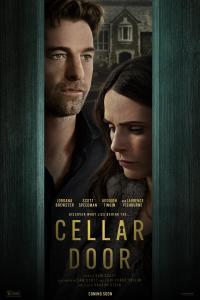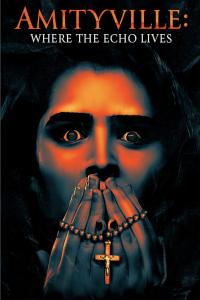Torrent details for "[ambient, classical] (2020) Sigur Rós - Odin's Raven Magic [FLAC] [DarkAngie]" Log in to bookmark
Controls:
Language:
 English
EnglishTotal Size:
334.50 MB
Info Hash:
cd82fca76dff114c27aed79eec5ffd12e8f7b751
Added By:
Added:
16-12-2020 22:13
Views:
811
Health:

Seeds:
7
Leechers:
1
Completed:
49
Name
DL
Uploader
Size
S/L
Added
-
176.99 MB
687
[11/0]
12/11/20 23:04
| Uploaded by DarkAngie | Size 176.99 MB | Health [11/0] | Added 12/11/20 23:04 |
-
256.74 MB
693
[8/0]
25/07/20 06:32
| Uploaded by DarkAngie | Size 256.74 MB | Health [8/0] | Added 25/07/20 06:32 |
-
178.97 MB
525
[6/0]
14/09/21 20:27
| Uploaded by DarkAngie | Size 178.97 MB | Health [6/0] | Added 14/09/21 20:27 |
-
438.08 MB
1,719
[5/1]
05/08/20 21:06
| Uploaded by DarkAngie | Size 438.08 MB | Health [5/1] | Added 05/08/20 21:06 |
-
185.30 MB
573
[4/1]
28/11/20 03:35
| Uploaded by DarkAngie | Size 185.30 MB | Health [4/1] | Added 28/11/20 03:35 |
-
233.42 MB
573
[3/0]
07/10/20 19:44
| Uploaded by DarkAngie | Size 233.42 MB | Health [3/0] | Added 07/10/20 19:44 |
Review:
Sigur Rós had begun work on 2002’s () when fellow Icelandic musician and religious figurehead Hilmar Örn Hilmarsson approached them about adapting a chapter from the 13th-century epic poem Edda. Two weeks later, the Odin’s Raven Magic collaboration was ready for a handful of performances — one notably in Paris at La Grande Halle de la Villette. The group captured a stereo mix recording of that night in 2005, but disappointment with the would-be visual component resulted in its 15-year hibernation. This unique chapter of Sigur Rós’ history now reveals itself, revitalizing Old Norse mythology with exquisite modern classical music. Odin’s Raven Magic is not Sigur Rós proper. Only the euphoric modulations and bouncy rhythms of “Dvergmál” come close to the band’s sound — one of four tracks with Jónsi’s iconic falsetto. The song also introduces one of the album’s centrepieces: a stone marimba built by Páll Guðmundsson. This lithophone defines much of this album’s sound, along with strings, horns and choirs orchestrated by Sigur Rós’ then-pianist/arranger Kjartan Sveinsson and his partner Maria Huld Markan Sigfúsdóttir. The duo’s work imbues opener “Prologus” with transfixing swells and crescendos. Sigur Rós and Hilmarsson sought the help of local fisherman and renowned chanter Steindór Andersen to handle the poetry. His traditional folk singing echoes within the droning dissonance of “Alföður orkar,” providing intimate fervency on which the sweeping bombast of the choir, strings and brass can build. Vast, overwhelming climaxes embody the poem’s apocalyptic premonitions and banqueting gods, while Andersen’s lonesome melodies embody the human tragedies that result from cosmic calamities. “Hvert stefnir” and “Stendur æva” incorporate Andersen’s chanting into staccato marimba lines, creating an aura as unique as it is hypnotic. The classical elements levitate the music to the gates of Asgard, but each shift in dynamics and instrumentation can still trace back to a simple, emotive vocal pattern. Even Jónsi’s angelic singing serves the poem’s multifaceted melancholy, as he and Andersen play off each other naturally during the song’s last moments. Even without Andersen and Jónsi, this album’s concept remains potent. From field recordings and a hushed electronic pulse, “Áss hinn hvíti” creeps over the horizon with forlorn brass melodies and choral layerings. The drama is worthy of Beowulf and Tolkien, but still breaks down to a folk tune made for singing at the northernmost waterfront. To that effect, “Spár eða spakmál” features Sveinsson and Sigfúsdóttir’s lushest compositions, but ends with the return of Jónsi and Andersen’s duet from “Stendur æva.” Closer “Dagrenning” drives home the performance’s sonic through line by reintroducing motifs from “Alföður orkar.” Odin’s Raven Magic‘s final crescendo finds Sigur Rós’ full-band instrumentation bolstering an orchestral wall of sound in a massive tour de force. Those last three minutes are the most post-rock-y this album ever sounds. This isn’t a Sigur Rós album, and that’s just fine. Lack of reverb-soaked bowed guitars notwithstanding, this collaboration vividly reimagines a bastion of medieval Icelandic poetry. The only issue is how long it spent under wraps.

Tracklist:
01 - Prologus
02 - Alföður Orkar
03 - Dvergmál
04 - Stendur Æva
05 - Áss Hinn Hvíti
06 - Hvert Stefnir
07 - Spár Eða Spakmál
08 - Dagrenning
Media Report:
Genre: ambient, classical
Format: FLAC
Format/Info: Free Lossless Audio Codec, 16-bit PCM
Bit rate mode: Variable
Channel(s): 2 channels
Sampling rate: 44.1 KHz
Bit depth: 16 bits















































